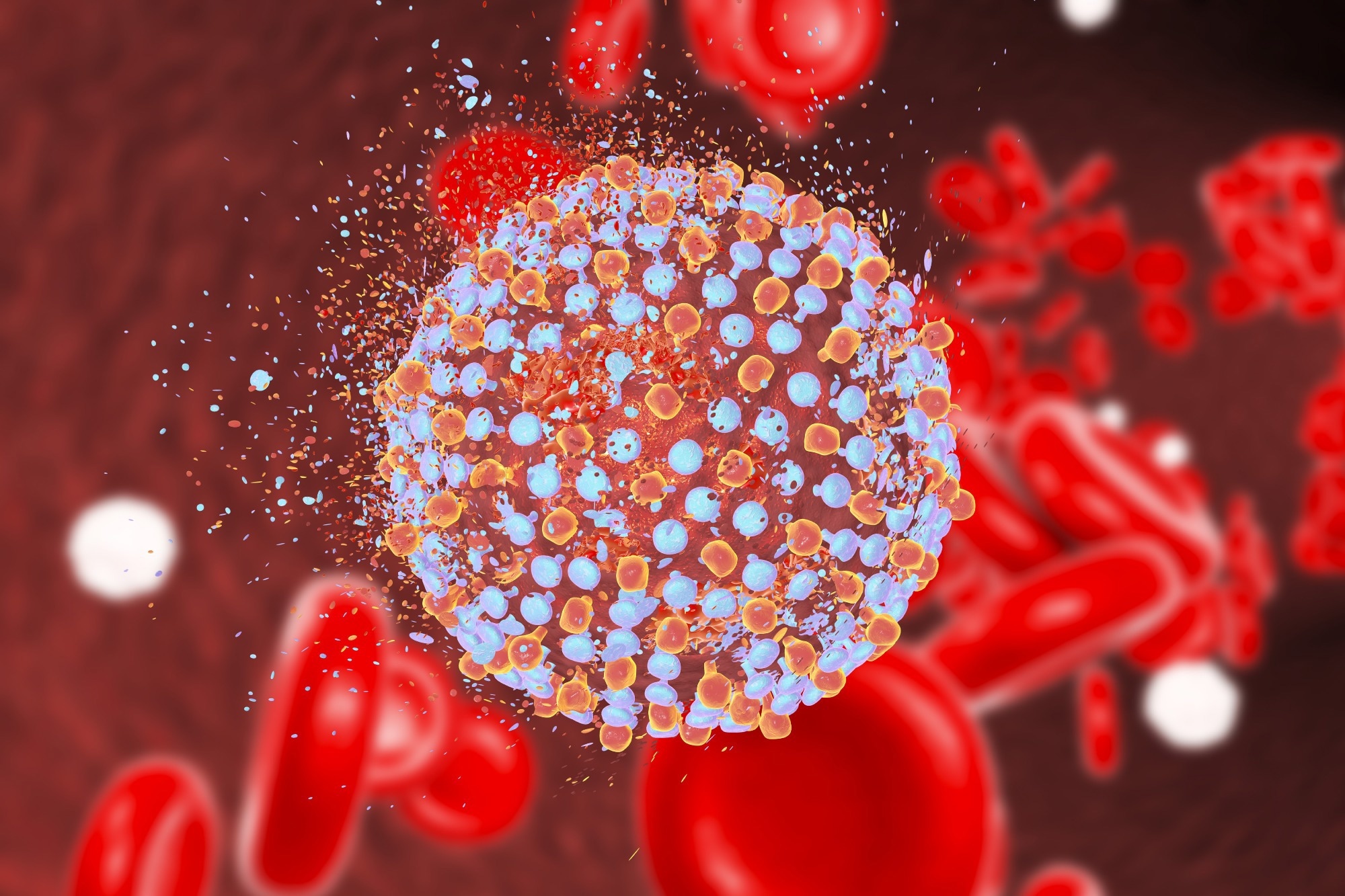In a recent study published in the npj vaccines journal, researchers assessed the immune protection elicited by messenger ribonucleic acid (mRNA) vaccines delivering Hepatitis C virus (HCV) E1 and modified E2.
 Study: Hepatitis C virus E1 and modified E2 delivered from an mRNA vaccine induces protective immunity. Image Credit: Kateryna Kon / Shutterstock
Study: Hepatitis C virus E1 and modified E2 delivered from an mRNA vaccine induces protective immunity. Image Credit: Kateryna Kon / Shutterstock
Background
HCV infection causes asymptomatic liver damage and is a global health crisis. A comprehensive strategy to combat HCV infection must incorporate an efficient vaccine development method. Chimpanzees immunized with recombinant E1 glycoprotein produced neutralizing antibodies when vaccinated with the HCV E1 glycoprotein.
A potential E1 therapeutic vaccine administered as virus-like particles showed sufficient tolerance and was immunogenic in adult males in a phase I investigation. In addition, a cellular immune response was induced against E1, featuring a robust Th1 component. Studies have indicated that HCV E2 exhibits immunoregulatory properties, which may explain why a robust immune response to E1 is diminished when administered in combination.
About the study
In the present study, researchers evaluated the immunogenicity of the HCV ectodomains of E1 protein in mice who were and were not vaccinated with the soluble E2 (sE2) mRNA-lipid nanoparticles (LNPs) vaccine.
The team used a surrogate challenge paradigm to determine the biological significance of a protective cellular immune reaction elicited by mRNA-LNP vaccination comprising varying HCV envelope constructions. The paradigm employed a recombinant vaccinia virus that expressed HCV E1-E2-NS2. BALB/c mice were infected intraperitoneally with the recombinant virus two weeks after their second mRNA-LNP vaccination.
Four days later, the mice were euthanized, and their ovaries were collected for vaccinia virus recovery. The team examined the tissue-specific concentrations of interleukin (IL)-2 and interferon (IFN)-γ in the ovarian homogenate obtained from mice challenged with recombinant vaccinia virus.
HCV-lentiviral pseudotype particles (HCVpp) reflecting homologous H77C neutralization by sera from individually vaccinated animals were examined to determine the relative antibody neutralization associated with each HCV envelope-mRNA candidate vaccine. Using enzyme-linked immunosorbent assay (ELISA), the researchers also examined Th1 and Th2 specific cytokines in the serum samples of mice vaccinated with the HCV envelope-mRNA-LNP-vaccine. Furthermore, the team determined if combining sE1 and modified sE2F442NYT vaccination improved the protective effect of the vaccine formulations.
Results
The study results showed that mice inoculated with sE1/sE2 mRNALNP either along with or only sE2 mRNA-LNP displayed an approximate 1-log reduction in the average viral titer compared to mice immunized with mRNA-LNP vehicle control. However, four of the five modified sE2F442NYT-vaccinated mice did not demonstrate a detectable viral titer following challenge inoculation with the recombinant vaccinia virus. Whereas the remaining mice exhibited an almost 8-log drop in virus titer.
Remarkably, the mice inoculated with sE1 alone exhibited a significantly lower virus titer than the control group. Therefore, the modified sE2 F442NYT mRNA-LNP vaccine formulation elicited the most robust immunological response in the surrogate challenge animals.
Furthermore, in the presence of native HCV E2 mRNA-LNPs, the protective cellular response induced by the administration of mRNA-LNPs expressing HCV E1 was significantly diminished, demonstrating that HCV E2 may have a modifying influence on co-inoculated immunogens.
The team noted a remarkable increase in IL-2 and IFN-γ levels in mice inoculated with modified sE2 F442NYT mRNA-LNP. The group inoculated with sE1 alone also demonstrated a modest improvement in the IL-2 and IFN-γ expression. However, mice inoculated with sE1/sE2 in combination or only sE2 displayed extremely low expression levels of these cytokines.
Additionally, the sE2F442NYT immunized cohort demonstrated a nearly two-fold higher reduction in HCVpp luciferase activity than the sE1/sE2 combination immunization cohort, indicating increased neutralization efficacy. Immunization with sE2 alone did not differ significantly from vaccination with sE1 and sE2. In certain instances, sE1-immunized mouse sera demonstrated greater neutralization than sE1/sE2-immunized mice sera, although this was not the case for all immunized animals.
Th1-specific cytokines, namely IL-2 and IFN-γ, were considerably raised in the sE2F442NYT-immunized cohort, but the sE1-immunized group also exhibited elevated levels of IL-2 and IFN-γ. Mice inoculated with sE1/sE2 combined or only sE2 had low levels of Th1-specific cytokines. In contrast, the Th2-specific cytokines, namely IL-4 and IL-10, were elevated in vaccinated mice exposed to sE1/sE2 in combination or only sE2.
These findings indicated that vaccination with sE2 alone generated higher Th2-specific cytokine levels, whereas immunization with sE1 alone had the reverse effect. Moreover, immunization with both sE1 and sE2 produced a cytokine profile identical to solitary SE2 vaccination, supporting the modulatory nature of sE2.
Vaccination with sE1/sE2F442NYT combined increased HCVpp neutralization potency by almost 10% to 20% compared to sE2F442NYT immunized mouse serum samples alone. Furthermore, HCV E1 glycoprotein showed discrete T-cell neutralizing and pan-genotype neutralizing epitopes. Hence, the combination of sE1 and sE2F442NYT mRNA-LNP could expand the scope of the vaccine candidate concerning viral clearance, especially in the absence of sE2's suppressive properties.
Conclusion
The study findings showed that the modified sE2F442NYT mRNA-LNP vaccine displayed robust protective cellular immunological response. In addition, increased neutralizing antibody response was reported using a homologous HCVpp model to evaluate the immunogenicity of the candidate vaccines.
Adding sE2 in an mRNA-LNP vaccine significantly inhibits the protective immunological response elicited by sE1 immunization. The suppressive influence of sE2 may be attributable to the production of more anti-inflammatory cytokines. Vaccination with sE2 alone elicited more potent Th2-specific cytokines, whereas sE1 demonstrated a cytokine profile more akin to a Th1 response.